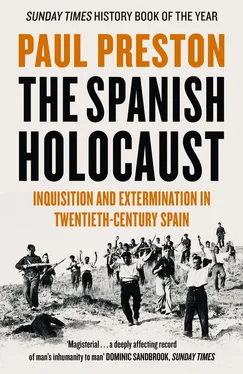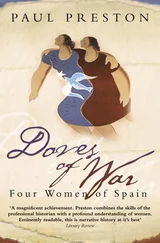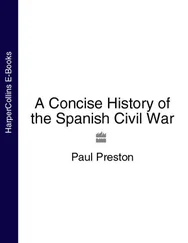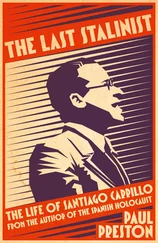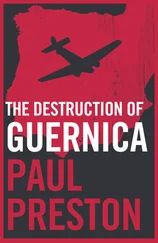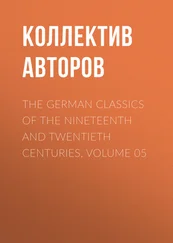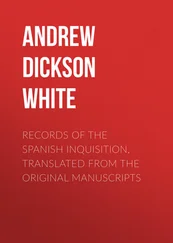There were other fatal incidents involving the Civil Guard throughout the months following Arnedo. As part of the 1 May 1932 celebrations at the village of Salvaleón in Badajoz, a meeting of FNTT members from other towns and villages in the province was held at a nearby estate. After speeches by several prominent Socialists including the local parliamentary deputies Pedro Rubio Heredia and Nicolás de Pablo, a workers’ choir from the village of Barcarrota sang the ‘Internationale’ and the ‘Marseillaise’. The crowd dispersed, many to attend a dance held in Salvaleón. Afterwards, before returning to Barcarrota, the choir went to sing outside the home of the Socialist Mayor of Salvaleón, Juan Vázquez, known as ‘Tío Juan el de los pollos’ (Uncle John the Chicken Man). This late-night homage infuriated the local commander of the Civil Guard whose men opened fire, killing two men and a woman, as well as wounding several others. In justification of his action, the commander later claimed that a shot had been fired from the crowd. Arrests were made, including the deputy Nicolás de Pablo and Tío Juan, the Mayor of Salvaleón. Pedro Rubio would be murdered in June 1935, Nicolás de Pablo at the end of August 1936 and Juan Vázquez in October 1936 in Llerena. 64
Sanjurjo was relieved of the command of the Civil Guard in January 1932 and appointed Director General of the Carabineros (frontier guards). He, and many others, assumed that he was being punished because of his stance after Castilblanco. 65As a result, he was fêted by the extreme right. Eventually in August 1932, he led an abortive military coup. It was briefly successful only in Seville, where it was enthusiastically supported by the local right. During the so-called ‘Sanjurjada’ (the Sanjurjo business), the plotters arrested the most prominent Republicans in Seville, including the Mayor, José González Fernández de Labandera. When he had heard of the coup attempt on 10 August, Labandera had immediately gone to the town hall and ordered all the town councillors, heads of parties and unions to attend. He had already created a Committee of Public Salvation (Comité de Salvación Pública) when Major Eleuterio Sánchez Rubio Dávila arrived, sent by Sanjurjo to take over as Mayor. Labandera had refused and a perplexed Sánchez Rubio Dávila withdrew. He returned shortly afterwards with a unit of the Republican anti-riot police, the Assault Guards, and arrested Labandera who, as he was taken away, shouted, ‘Last decree of the Mayor, declaration of a general strike of all public services.’ The declaration of the strike virtually guaranteed the failure of the coup and saved his life, but the local right would take its revenge when the Civil War started. Labandera was shot on 10 August 1936.
Among the civilian participants in the coup were many of those who had been involved in the Guardia Cívica responsible for the events in the Parque de María Luisa in July 1931. There is no sign that they were deterred by their failure in 1932. Indeed, several of them, along with the officers involved, would be prominent in the events of the summer of 1936. 66Sanjurjo was tried for treason on 25 August in the Military Section of the Supreme Court. The acting president of the court, Mariano Gómez González, had no choice but to issue the death sentence, but he recommended a pardon with the sentence reduced to expulsion from the army. 67Plutarco Elías Calles, the Mexican President, sent a message to Azaña: ‘If you wish to avoid widespread bloodshed and make the Republic live, shoot Sanjurjo.’ In cabinet, Azaña successfully argued in favour of Mariano Gómez’s recommendation. No one was shot, and Sanjurjo and others were imprisoned and eventually released. 68
Despite loud protests about the allegedly excessive prison sentences meted out, the right was sufficiently emboldened by the relatively feeble punishments to intensify preparations for a successful venture next time. 69The prison regime could hardly have been more easygoing. The man intended to lead Sanjurjo’s coup in Cádiz was Colonel José Enrique Varela, the most highly decorated officer in the army. Although he had not gone into action, his involvement in the conspiracy saw him arrested and jailed in the same prison which held the principal Carlist elements in the coup – Manuel Delgado Brackembury and Luis Redondo García, the leader of the city’s militant Carlist militia group or Requeté. They, and the Carlist leader Manuel Fal Conde who visited him, entranced Varela with their ideas for organized popular violence against the regime. Varela was entirely converted to Carlism after being transferred with Redondo to the prison at Guadalajara. 70
Unfortunately, the left became over-confident, seeing the Sanjurjada as the equivalent of the Kapp putsch of March 1920 in Berlin. Since Sanjurjo, like Kapp, had been defeated by a general strike, many believed that the defeat of the Sanjurjada had strengthened the Republic as Kapp’s failure had strengthened Weimar. Nothing was done to restructure guilty units. In contrast, the right learned much from Sanjurjo’s fiasco, especially that a coup could not succeed without the collaboration of the Civil Guard and that the Republican municipal authorities and trade union leaders had to be silenced immediately.
Above all, the conspiratorial right, both civilian and military, concluded that they must never again make the mistake of inadequate preparation. In late September 1932, a conspiratorial committee was set up by Eugenio Vegas Latapie and the Marqués de Eliseda of the extreme rightist group Acción Española and Captain Jorge Vigón of the General Staff to begin preparations for future success. The theological, moral and political legitimacy of a rising against the Republic was argued in the monarchist journal Acción Española. The group operated from the Biarritz home of the monarchist aviator and playboy Juan Antonio Ansaldo. Considerable sums of money were collected from rightist sympathizers to buy arms and to finance political destabilization for which unnamed elements of the CNT–FAI were put on the payroll. A substantial amount was also spent each month on the services of a police inspector, Santiago Martín Báguenas. He had been a close collaborator of General Emilio Mola, who had headed the Dirección General de Seguridad (the General Directorate of Security) in the last months of the monarchy. Martín Báguenas was now hired to provide an intelligence service for the conspirators and he in turn employed another of Mola’s cronies, the even more corrupt policeman Julián Mauricio Carlavilla. Another of the principal objectives of the new committee was the creation of subversive cells within the army itself, a task entrusted to Lieutenant Colonel Valentín Galarza Morante of the General Staff. 71
Galarza Morante had been involved in the Sanjurjada, but nothing could be proved against him. Azaña saw him as one of the most dangerous of the military conspirators because of knowledge acquired in years of meddling in the Ministry of War. 72Galarza would be the link between the monarchist conspirators and the clandestine association of army officers, the Unión Militar Española (UME), created at the end of 1933 by the retired Colonel Emilio Rodríguez Tarduchy, a close friend of General Sanjurjo and one of the first members of the fascist party, Falange Española. Members of the UME would play a crucial role in the military rebellion of 1936. 73Tarduchy was soon succeeded by a captain of the General Staff, Bartolomé Barba Hernández, an Africanista friend of Franco who had appointed him as a member of his teaching staff at the Academia Militar General in Zaragoza. 74
The defeat of Sanjurjo did nothing to calm social hatred in the south and the behaviour of the Civil Guard did much to exacerbate it. In late 1932, near Fuente de Cantos in the south of Badajoz, a left-wing meeting in the nearby fields was broken up by the Civil Guard and a local union leader, Julián Alarcón, detained. To teach him a lesson, they buried him up to his neck and left him until his comrades could return and dig him out. 75
Читать дальше
